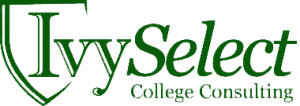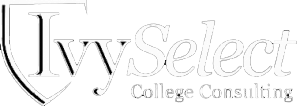Update on the “Public Ivy League” Universities
The term “Public Ivy” was introduced by Richard Moll, who was Yale’s Director of Admissions, in his 1985 book Public Ivies: A Guide to America’s Best Public Undergraduate Colleges and Universities. He used the term to refer to public institutions that provided what he considered the equivalent of an Ivy League education at the lower costs associated with public institutions.
Students seeking an education of the highest quality for less than the expense of a private institution were advised by Mr. Moll, and are advised today, to consider the Public Ivies. While gaining admission to a Public Ivy institution is difficult, students aspiring to attend a top-tier institution would do well to include one or more Public Ivies to their target schools list.
In Moll’s view, to qualify as a Public Ivy requires more than academic excellence. The term also connotes the “look and feel” of an Ivy League institution, i.e., a rich institutional history and set of traditions, a visually impressive campus, a diverse student body, and other characteristics common to Ivy League schools.
Moll identified eight Public Ivies to match the eight actual Ivies, which are Cornell, Yale, Harvard, Brown, Princeton, Penn, Dartmouth, and Columbia. His list includes:
- College of William & Mary in Williamsburg, VA
- Miami University of Oxford, OH
- University of California
- University of Michigan in Ann Arbor
- University of North Carolina in Chapel Hill
- University of Texas in Austin
- University of Vermont in Burlington
- University of Virginia in Charlottesville
Moll also developed a list of 9 worthy runners-up:
- University of Colorado in Boulder
- Georgia Institute of Technology in Atlanta
- University of Illinois in Urbana-Champaign
- New College of Florida in Sarasota
- Pennsylvania State University in University Park
- University of Pittsburgh
- State University of New York in Binghamton
- University of Washington in Seattle
- University of Wisconsin in Madison
Over three decades later, the schools chose by Moll to be Public Ivies are still consistently ranked by experts to be among the top public institutions. For example, in the 2016 review of American colleges and universities published by U.S. News & World Report, all but 2 of the top 17 national public universities were on Moll’s original 1985 Public Ivies list, although they’re ranked differently. The 2016 U.S. News rankings are provided below. (Unlike Moll, U.S. News ranks University of California branches as discrete institutions rather than as a single entity).
- University of California in Berkeley
- University of California in Los Angeles
- University of Virginia in Charlottesville
- University of Michigan in Ann Arbor
- University of North Carolina in Chapel Hill
- College of William & Mary in Williamsburg
- Georgia Institute of Technology in Atlanta
- University of California in Santa Barbara
- University of California in Irvine
- University of California in Davis
- University of California in San Diego
- University of Illinois in Urbana-Champaign
- University of Wisconsin in Madison
- Pennsylvania State University in University Park
- University of Florida in Gainesville
- Ohio State University in Columbus
- University of Washington in Seattle
For generations, top public universities have been considered to be levelers of the academic playing field, enabling high-achieving students of limited means to matriculate at flagship state universities in Michigan, Wisconsin, California, and other states to earn what many consider to be the equivalent of a Harvard or Yale education at an affordable price. However, despite their long tradition of excellence, the Public Ivies now face the possibility of decline in academic rigor.
The Public Ivy ideal relies on a model that is threatened by the diminution of bipartisan political support. Historically, the great majority of state elected officials have cooperated across party lines in enthusiastic support of their public universities. Increasingly, however, many of those in positions of power are abandoning that tradition and instead are undermining the universities.
This trend is evident in deep cuts in state support, political attacks on faculty and the tenure system, and a growing focus on the job-securing value of college education over the more generalized benefits of education in the humanities.
The Center on Budget and Policy Priorities reports that states have reduced per-student spending at public institutions by an average of 17% since 2007, while tuition has increased by 33%. This unfortunate trend has been seen most clearly in Wisconsin. For over a century, the “Wisconsin Idea” has been that the educational system, especially the University, benefits not just students but the economic well being of the entire State. This progressive concept once bound political leaders, who were opposed to each other on most other policy issues, in the belief that the University was the pride of the State and a source of opportunity for its youth.
In the first decade of the new century, funding for financial aid fell substantially in Wisconsin while tuition rose by 71%. In 2000, 10% of tax revenue went to the University system. In 2016, this figure was down to 6%. The same elected officials who cut aid now prohibit increases in tuition that would compensate for the lost revenue. As the University seeks revenue to offset cuts, in-state students are increasingly rejected in favor of out-of-state and international students who pay full tuition. This contravenes the historic purpose of Public Ivies, which is academic excellence combined with affordability enabled by strong state support.
Wisconsin is not alone. The phenomenon of irreconcilable partisan polarization is also visible in California, Virginia, North Carolina, Colorado, Arizona, and other states. Many state leaders maintain that the state should only subsidize a university to the extent that it assists students in obtaining employment.
In the name of modernization, the two abiding purposes of higher education, the search for truth and the veneration of knowledge for its own sake, are being treated as if they’re obsolete. In fact, they’re timeless, and they have never been more urgently needed than now. There are lessons in this for parents, students, and policymakers in every state. The implied dichotomy between education in the humanities and job training is a false one. Major employers seek graduates who are creative, skeptical, and analytical thinkers. Of course, students learn technical skills at public universities, but, more importantly, they also have the opportunity to learn the vital, enduring concepts associated with education in the humanities.
IvySelect is a college admissions consulting firm that specializes in top-tier institutions. We provide superior comprehensive and individualized counseling based on years of experience in guiding students to success in meeting their educational goals. In addition to Ivy League and many other top-tier institutions, we have assisted students in gaining admission to a number of Public Ivies, including Berkeley, UCLA, Virginia, North Carolina, Texas, and Michigan.





